Los días siguen acumulándose y no se tiene rastro del paradero del abogado Ricardo Lagunes y el profesor Antonio Díaz, desaparecidos el pasado 15 de enero en la localidad de Cerro de Ortega, Colima, tras su participación en una reunión de comuneros en San Miguel Aquila, cabecera municipal homónima de una de las alcaldías más extensas de Michoacán que está ubicada en las cercanías de la frontera entre estos dos estados.
La situación en aquella comunidad está caracterizada por la división de su asamblea comunal. Desde que la empresa minera Ternium –de capital ítalo-argentino– comprara a su antecesora Las Encinas, de la empresa Hylsa. Alrededor de 2005 y hasta la actualidad, ha habido una serie de problemáticas respecto a faltas de en el cumplimiento de acuerdos a los que, tanto la comunidad, como la empresa, han suscrito.
Especialmente a partir de 2012, momento en que la mina decide hacer público el dinero de regalías que le pagaba a cada comunero, dejando a merced de la extorsión a la población, particularmente en un momento en que el grupo criminal Caballeros Templarios controlaba casi el total de la economía y la política en la región.
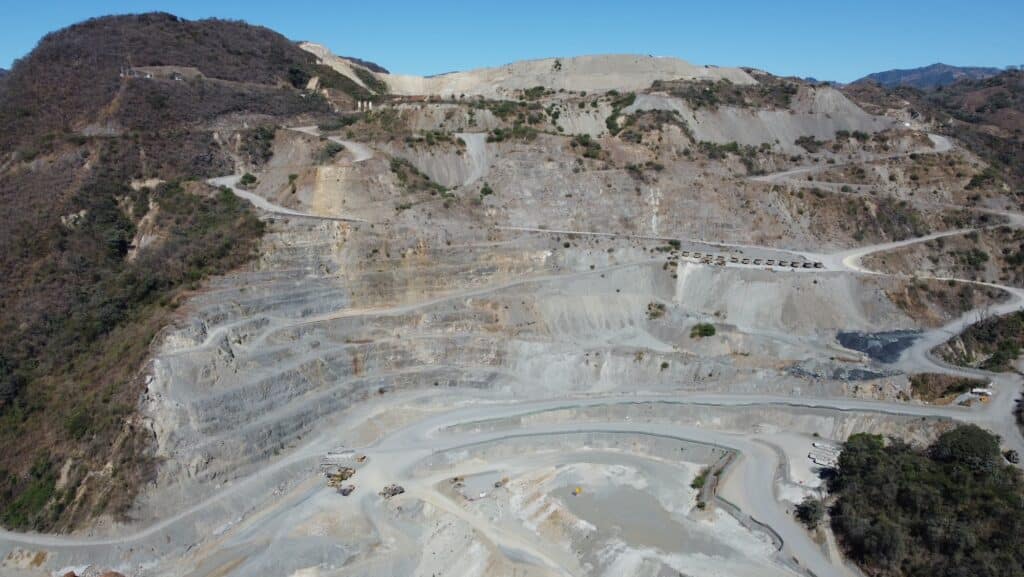
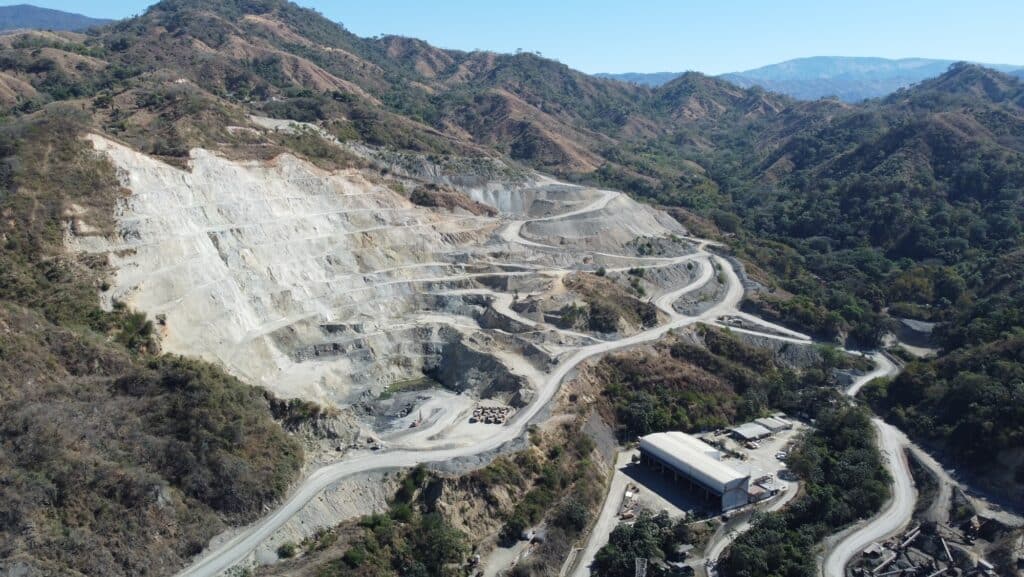
Son conocidas las vinculaciones entre este grupo y los apoyos que recibió de la mina para explotar ilegalmente algunas de las montañas y extraer hierro.
Hoy, tras más 4 años de no tener autoridades agrarias electas legalmente –como lo marca la Ley Agraria vigente en México–, Aquila continúa exigiendo al Tribunal Unitario Agrario #38 la convocatoria para elegir nuevas autoridades, procedimiento que, según algunos comuneros miembros de la asamblea legítima comentaron en entrevista para Península 360 Press, ha sido obstruido por un grupo minoritario aliado a la mina.
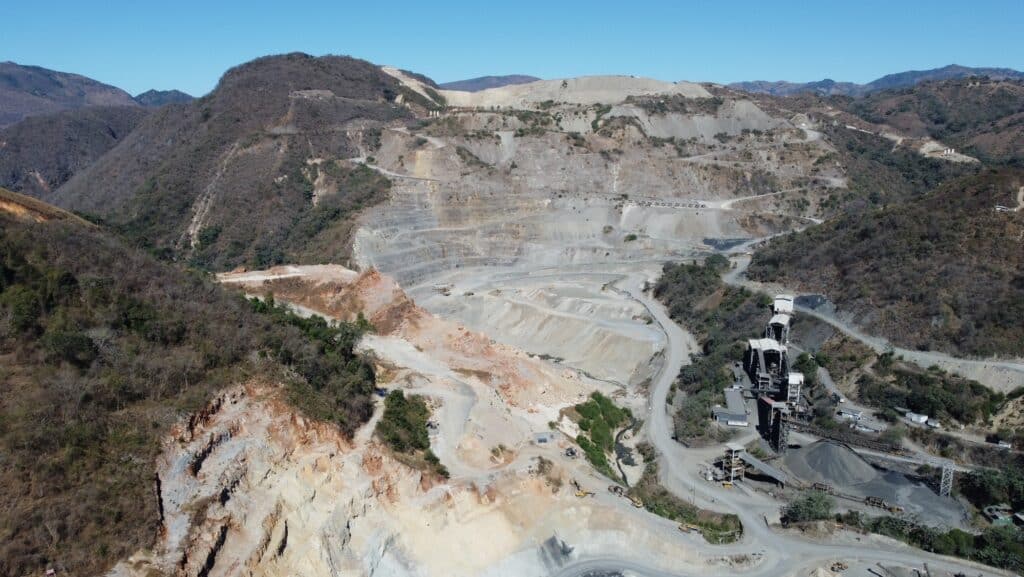
«La empresa fue la que causó está división, a ellos les conviene, porque si nos juntamos la sacamos del lugar, por las anomalías que han estado haciendo. Viendo el problema que han causado ya los hubiéramos corrido de aquí. Este grupo minoritario son ex comisariados que en el tiempo que estuvieron ellos cosas turbias, chuecas a favor de la empresa, no de la comunidad, porque todo el tiempo se han ido por llenarse sus bolsitas de dinero, con base a que trabajan para la empresa y la empresa les da sus billetes», explicó Eduardo Sandoval, comunero reconocido de Aquila y miembro de la asamblea legítima.
«No han aportado para la comunidad, para todos los comuneros que forman todo el grupo y esta división ha sido muy dañina para la comunidad», agregó.
Ternium está incurriendo en faltas graves a los acuerdos de ocupación de terrenos y son señalados como responsables de la desaparición de las dos figuras representativas de la parte mayoritaria de la asamblea comunal. Reyes Cisneros, también comunero reconocido de Aquila, comenta que: «Fue un engaño de la empresa, hace una negociación, hace firmar a la comunidad y realmente no estamos de acuerdo con lo que hace. Ellos buscaban una ampliación para terrero, aunque realmente lo hicieron para explotación, y no estamos de acuerdo, por eso estamos haciendo reuniones informativas y la convocatoria y así poder definir porqué están pasando las cosas.
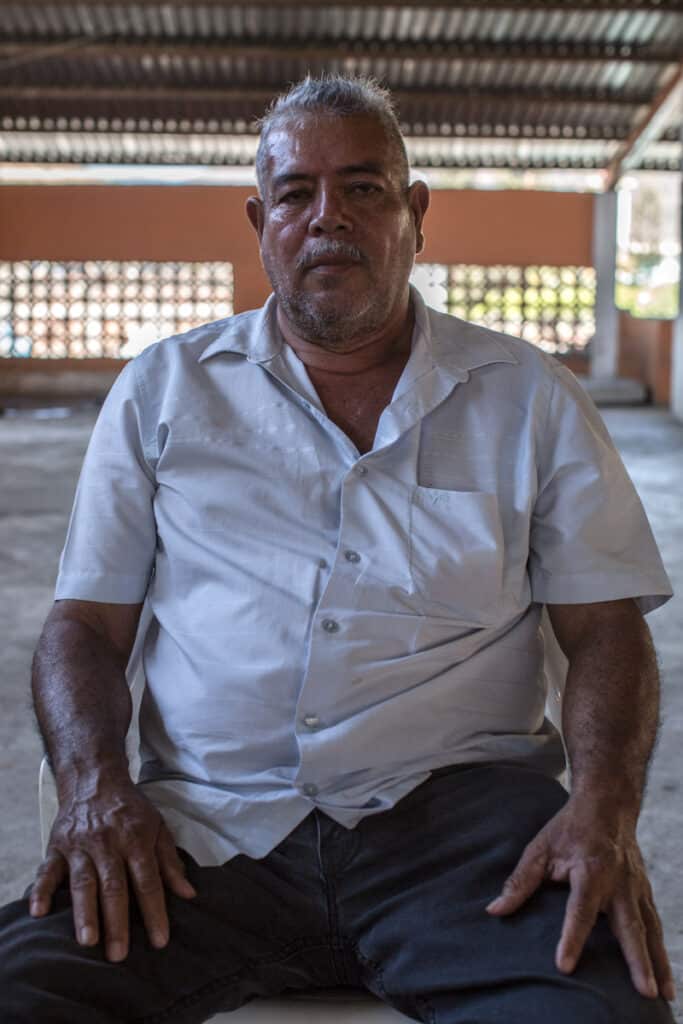
«En este marco de hechos delictivos, el profesor Antonio Díaz Valencia asumió el liderazgo de la mayoría de los comuneros reconocidos, y para defenderlos legalmente en los tribunales agrarios y donde fuera necesario, en el año 2019 contrató al licenciado Ricardo Lagunes Gasca, reconocido defensor de Derechos Humanos y de gran experiencia en la justicia agraria», según dieron a conocer en un comunicado difundido el pasado 28 de febrero.
Este enredo jurídico es tan sólo la punta del iceberg de lo que es tal vez uno de los ejemplos más representativos de la colusión entre empresas mineras y grupos criminales armados, usando para ello a intermediarios de la propia comunidad, quienes hasta ahora han sido señalados por los propios comuneros, como aliados a los intereses de la mina.
No es que antes no haya ocurrido, en la región y en México, que los intereses económicos de una empresa de explotación de recursos naturales dividen a la comunidad en la que está situada, amolda la legalidad a su conveniencia y, si es preciso, quita del camino a las personas que considera un obstáculo.
Nada bueno ha dejado Ternium
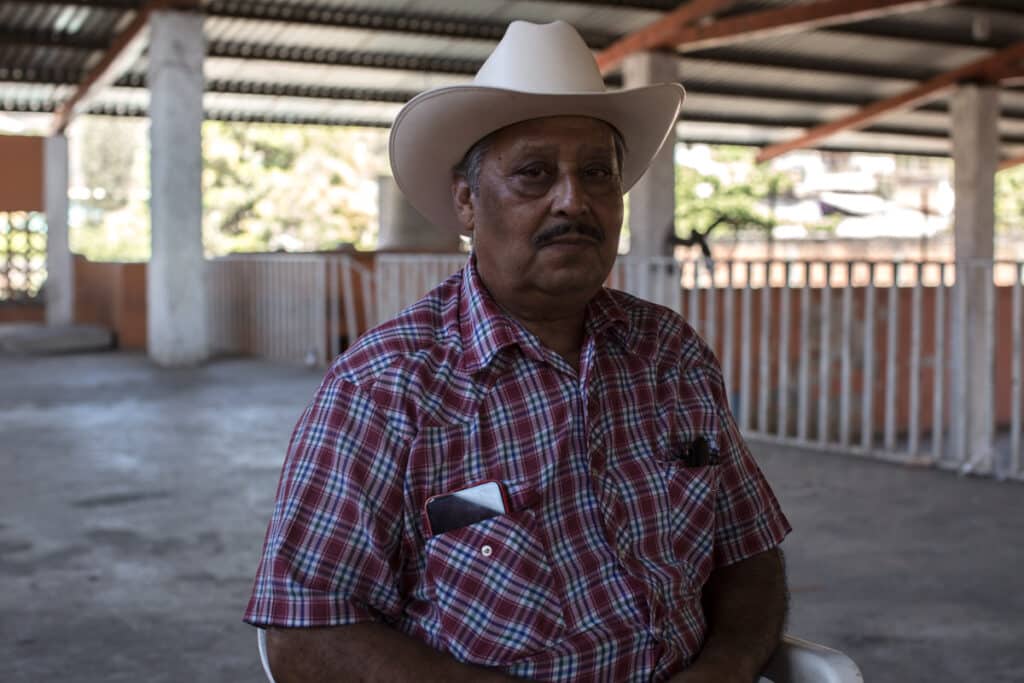
De sombrero y voz pausada, Eduardo Sandoval, originario de Aquila, acepta sentarse con nosotros a platicar de lo que ocurre tras la llegada de Ternium: «Lo que hacen es contaminar, nuestro río tenía mucho pescado, muchos chacalitos y cuanto animalito había, ahora ya no hay nada porque se metieron a excavarlo».
«No hay nada –continúa sin aspavientos a pesar de que el calor arrecia– que nos estén restaurando. Quedamos en un acuerdo de reforestación, pero no hay nada, no lo hacen, lo hacen en otros lados, en San Juan, en Ojo de Agua y ellos reportan que lo hacen en la comunidad, pero aquí no ha habido nada. Hay deforestación, esos sí, a los árboles milenarios que teníamos los cortaron y dejaron el puro asoleadero ahí donde están y es donde están excavando».
En efecto, la devastación es visible para quien visita esta cabecera municipal, y más si se le compara a esta población y sus alrededores con otras áreas colindantes en donde no hay mina. Las montañas se ven totalmente desnudas de árboles en partes considerables, y la imagen del tajo grande es como si un monstruo hubiese arrancado un pedazo del cerro con dientes afilados. Logramos la imagen de esta mordida gigante y alcanzamos a percibir que, además, la herida se expande y amenaza otras partes de la sierra que entorna a Aquila.
El señalamiento de Sandoval acerca del río es también una de las consecuencias más visibles al llegar a la comunidad desde la costa, el camino pasa sobre un puente por lo que alguna vez fue un río caudaloso y que ahora es tan sólo una huella que guarda espuma y un líquido blanco. Entre esta escena y las montañas mordidas, el sol que quema y los pocos árboles para protegerse, la cabecera municipal de esta alcaldía es el epicentro de un conflicto que ya ha arrebatado vidas antes y ha dejado otras más en suspenso, pero que con la desaparición de Ricardo Lagunes y Antonio Díaz, nuevamente atrae reflectores.
«Llegaron con un enorme montón de maquinaria, decían ellos que iban a mover el cerro este y si querían iban a mover aquel también. En poco tiempo le dieron un bajonazo tremendo y había muchísimo mineral, tenían una quebradora pequeña pero después cambiaron a una más grande y más ágil, que movía mucho más mineral y a raíz de eso empezaron a hacer unas excavaciones muy grandes y muy profundas y ahí destapaban mantos acuíferos y hacían un derrame de agua por todos lados y la contaminación del agua y tantas cosas», agrega Eduardo Sandoval mientras llega el único momento de la entrevista en la que se le nota afligido.
Por su parte, Reyes Cisneros afirma que han hecho inspecciones y han descubierto que Ternium ha violado los acuerdos y contratos respecto al uso de los terrenos que la comunidad le ha proporcionado, específicamente porque en lugar de usarlos para maniobras los está usando para explotación minera. Nuevamente el monstruo intenta morder más de lo permitido.
«Ahora nos damos cuenta que están explotando allá, que están explotando acá, por todos los ángulos de la ocupación temporal de la mina».
Divide y vencerás
Don Eduardo señala que Ternium comenzó a meterse en los asuntos organizativos de la comunidad también empezó a controlar las decisiones de los magistrados en el TUA #38 y, además, favoreció a un grupo que aceptó trabajar con ellos, un grupo de alrededor de 40 personas.
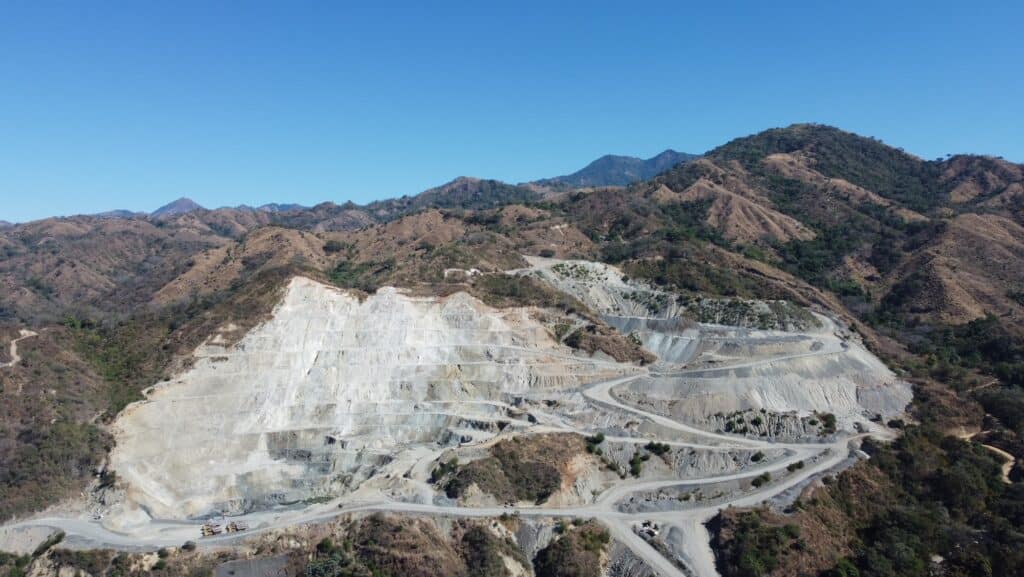
Esto es lo que se conoce como el grupo minoritario, el cual quería tener su propio comisariado, por encima de la ley y de los intereses de la mayoría de comuneros. Incluso llegaron a tener una sede distinta del Auditorio Comunal, «una casa particular, en Zapotán, en lo que le decían la Casa Comunal, que ellos mismos formaron, que no fue formada por un acuerdo de comuneros».
Entre los principales intereses que tiene este reducido grupo junto con la empresa minera está un punto conocido como «La Colmena», lugar que cuenta con mayor cantidad de hierro, según nos relata don Eduardo. «Aquel grupo, ya le había dado luz verde a la empresa para que se moviera para allá. Querían hacerlo como el otro grupo quería, se iban a ganar una millonada».
«No queremos división, –agrega don Reyes– sino unificar la comunidad, pero unificarla de una manera pacífica. Queremos que, si se hace una negociación en el futuro, los beneficios sean repartidos entre todos los que acrediten ser comuneros. Nos entristece mucho que los tribunales agrarios, sobre todo el de Colima, decidan cosas con las que no estamos de acuerdo».
Teniendo en cuenta estos antecedentes, el 4 de enero de 2023, tuvo lugar una reunión en Aquila en la que participaron funcionarios de Morelia y del gobierno federal, el presidente municipal, José María Valencia y todos los comuneros legítimos. Ahí fue donde se dieron a conocer las amenazas que Ternium había hecho en contra del representante de la Asamblea Comunal, Antonio Díaz, y su abogado, Ricardo Lagunes.
«El maestro Toño era el que nos representaba en todos los juicios o todos los lugares a los que íbamos, en México, Morelia y el licenciado Lagunes era el que llevaba los juicios, ante los tribunales, como el 38 de Colima. Tuvo una batalla muy fuerte contra el grupo minoritario y muchas amenazas de parte de ellos», afirmó don Eduardo Sandoval.
«Yo estuve en muchas ocasiones, saliendo a audiencias y esas cosas y ahí se notó el coraje que le traen al licenciado, a don Toño, a nosotros. Amenazas de todo tipo. Se hizo la amenaza el día 4 de enero y se consumó el día 15, aquí no hay más qué dudar, es el grupo opositor y la empresa los que están de acuerdo en esto», subrayó.
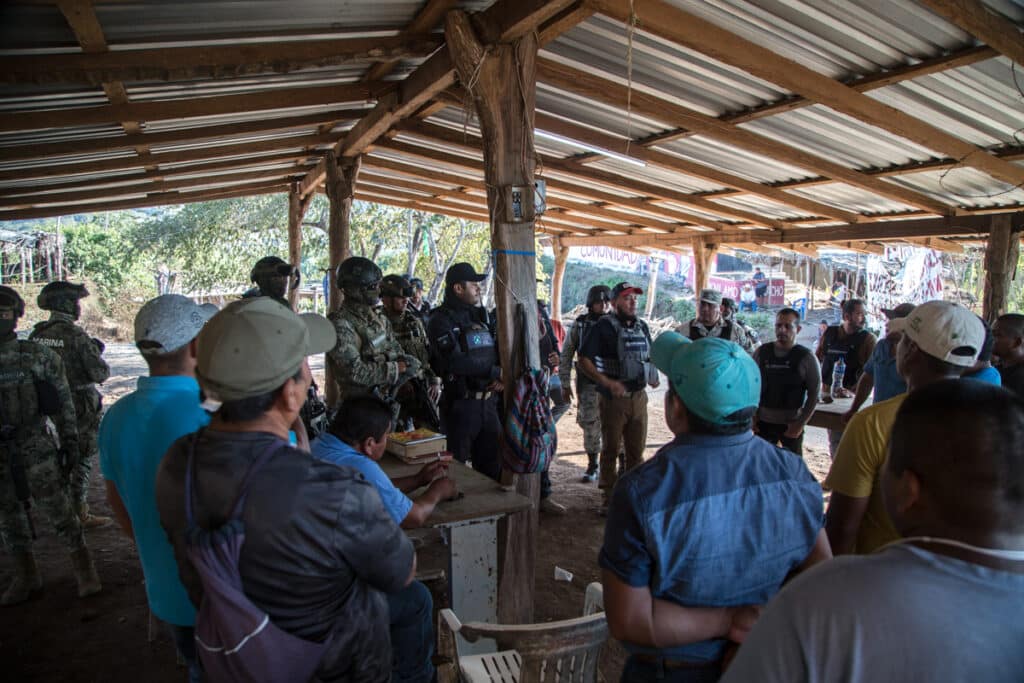
A consideración de estos dos comuneros que aceptaron ser entrevistados, el grupo mayoritario de comuneros está en riesgo latente y temen que las desapariciones y/o asesinatos continúen mientras la empresa minera Ternium y sus aliados al interior de Aquila no consigan sus objetivos económicos y políticos de ganancias y control.
Las sospechas que tenemos nosotros, por medio de las amenazas y todo eso, es sobre Ternium y la gente que trabaja con ellos, es decir, el grupo minoritario. Tenemos que tener mucho cuidado con estos empresarios, no nos vayan a encontrar por ahí y nos vayan a echar la guillotina encima porque si no hasta aquí nos vamos a ver”.
Estrategia criminal
Lejos de que las desapariciones referidas y los ataques a los comuneros de Aquila sean hechos aislados, en la región de la sierra-costa michoacana, el grupo criminal Cártel Jalisco Nueva Generación ha intentado también desestabilizar a otras comunidades, particularmente a Santa María Ostula, territorio vecino a la cabecera municipal y uno de los principales intereses de Ternium para expandir sus predios de explotación.
Pedro, comunero de Ostula, también aceptó ser entrevistado para Península 360 y comparte algunos hechos ocurridos desde comienzos de este 2023:
«Primero, desde el 6 de enero, le tendieron una emboscada a la Guardia Comunal en los límites con Aquila. Constantemente ha habido agresiones y el 12 de enero ocurre la baja de los 3 compañeros, Isaúl, Miguel y Rolando, ellos estaban en un punto estratégico, de control para detener el avance del CJNG a nuestras comunidades».
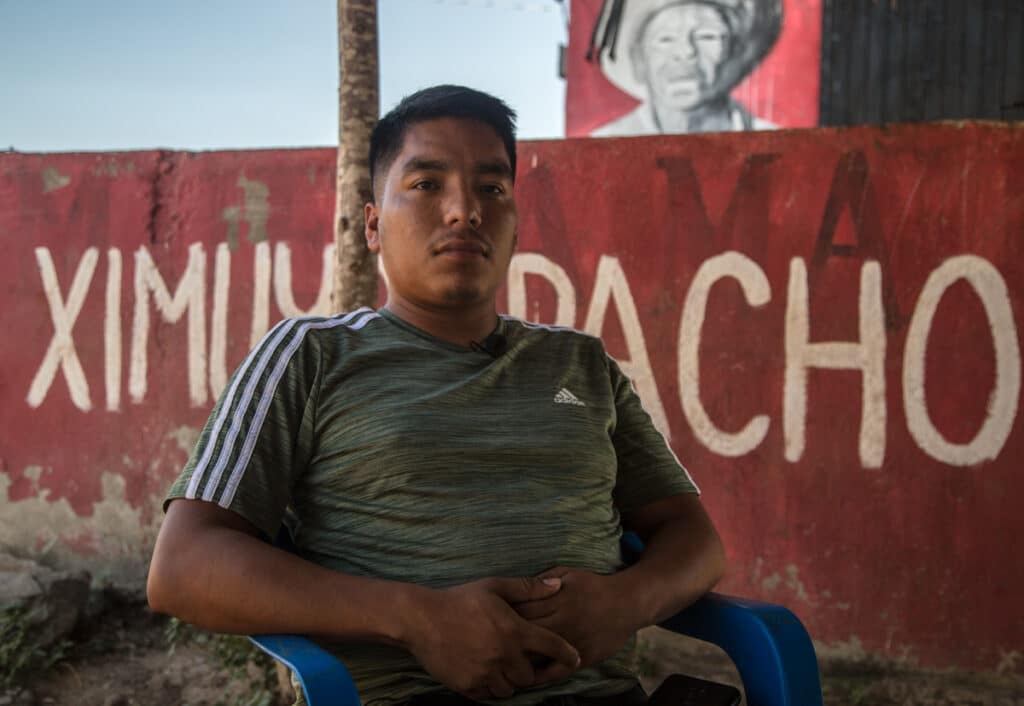
«Fueron embocados ahí, en el cambio de turno y un comando de unos 20 sicarios sorprendieron a los compañeros y los asesinaron y posteriormente, a los pocos días, pasa la desaparición del abogado Ricardo Lagunes y el profesor Antonio Díaz. Fue en el Cerro de Ortega, balacearon la camioneta y unos individuos lo sacaron arrastrando a uno, según contaron testigos».
Estos hechos fueron cometidos, según investigaciones de la propia comunidad y de su Guardia Comunal, por el mismo grupo armado que está aliado a la empresa minera y al grupo minoritario que opera desde la ilegalidad.
Según una fuente confidencial que pidió estar en el anonimato, en este triángulo están involucrados 3 personajes muy conocidos en la región: Agustín Villanueva, antiguo autodefensa y aparente opositor a la misma empresa Ternium de quien ahora es señalado como aliado al compartir intereses económicos; Cemeí Verdía, expulsado de la comunidad de Ostula al ser vinculado al CJNG; y José Luis Arteaga Olivares, ex presidente municipal de Aquila (2015-2018).
«Quieren controlar la cabecera municipal de Aquila ya, por eso golpearon al grupo organizado mayoritario, para descabezarlo y que nadie quiera ser su representante, de esta manera el grupo pequeño pero armado ahora podrá fingir una conciliación y tratará de imponer a un candidato para las siguientes elecciones de 2024, alguien del PRI, seguramente será Cochelo [José Cortés Ramos, ex alcalde (2008-2011) inhabilitado por un periodo para ejercer cargos públicos en Michoacán]».
Según esta fuente, el CJNG está comenzando a operar como lo hacían los Caballeros Templarios anteriormente, es decir, tratan de tener un control territorial y de imponer un cobro de cuotas, por eso, «debemos de pensar –continúa– como piensa un cártel, para poder hacerle contrapeso, no importa el nombre que le pongas si al final las estrategias y las personas que lo integran son criminales, es eso lo que hay que combatir, por eso Ostula defiende mucho su territorio, para impedir que este grupo avance y acabe con la vida en calma que se tiene, lo que ha costado tanto lograr».
Para Pedro, el CJNG está queriendo entrar a las comunidades de la sierra-costa, «yo creo que ellos buscan llegar al puerto de Lázaro Cárdenas, tener el control, porque hasta donde tengo entendido sólo controlan Manzanillo y la ruta de los precursores químicos para las metanfetaminas, para el trasiego de droga, es clave, pero también en esta zona está el cobro de cuotas, un claro ejemplo de ello es Chinicuila [municipio colindante con Aquila], desde que el CJNG está en asentado allá, a todos los negocios les cobran 2 salarios al día».
«Todos los negocios. Aparte la explotación de las minas. Cuando estaban los Caballeros Templarios iban con todo y las personas que traicionaron a las comunidades, ¿cuál es su propósito? Explotar las minas».
En este contexto, muchos dolores se suman al miedo en que vive la población de la región, no sólo a las constantes balaceras que se registran casi diario sino a los ataques selectivos, como los de los guardias comunales de Ostula que fueron asesinados por miembros del CJNG, los cuales grabaron videos de este hecho y los difundieron en redes sociales con tono de burla.
«Afectó mucho a la comunidad, porque son hermanos comuneros, eran compañeros que nos apoyaban con la seguridad. Ellos estaban conteniendo al cártel para que podamos vivir bien, a gusto, y en vez de que los balazos estén aquí, que los balazos estén allá, donde están los del cártel. Mientras la Guardia Comunal esté, la comunidad va a estar bien, Ostula está alerta pero no nos da para abajo sino para arriba», finaliza Pedro la entrevista realizada en uno de los filtros de seguridad que ha establecido su comunidad para mantener el orden y la seguridad.
La institución de búsqueda que no busca
19 días después de la desaparición de Ricardo Lagunes y Antonio Díaz autoridades de seguridad y agrarias detienen pacíficamente un convoy compuesto por diversas instituciones federales: Secretaría de Marina ‒SEMAR‒, Secretaría de la Defensa Natural ‒SEDENA‒, Guardia Nacional ‒GN‒, Secretaría de Gobernación ‒SEGOB‒ y Comisión Nacional de Búsqueda ‒CNB‒.
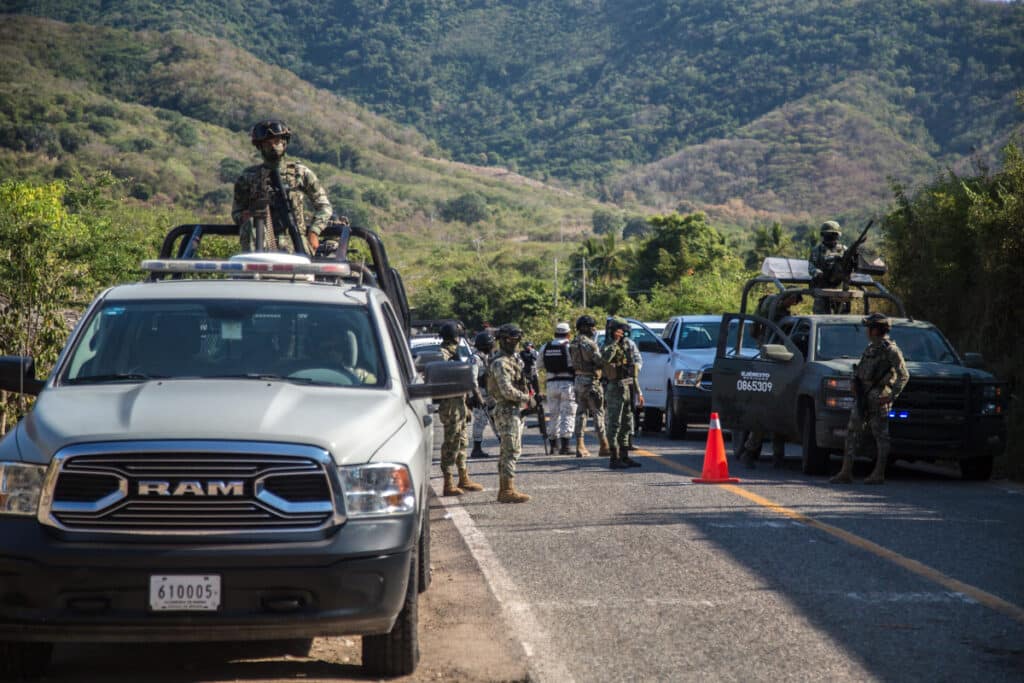
Las autoridades de la comunidad nahua decidieron esperar a que este convoy pasara por su filtro de seguridad, en lo que parecía ser el fin de un operativo llevado a cabo sin previo aviso, sin autorización para que estas autoridades ingresaran al territorio comunal y sin aclarar los objetivos del mismo. Luego de que los 10 vehículos se detuvieran y que de ellos descendieran representantes de las instituciones federales mencionadas, tuvo lugar una reunión en donde se les plantearon estas y otras preguntas.
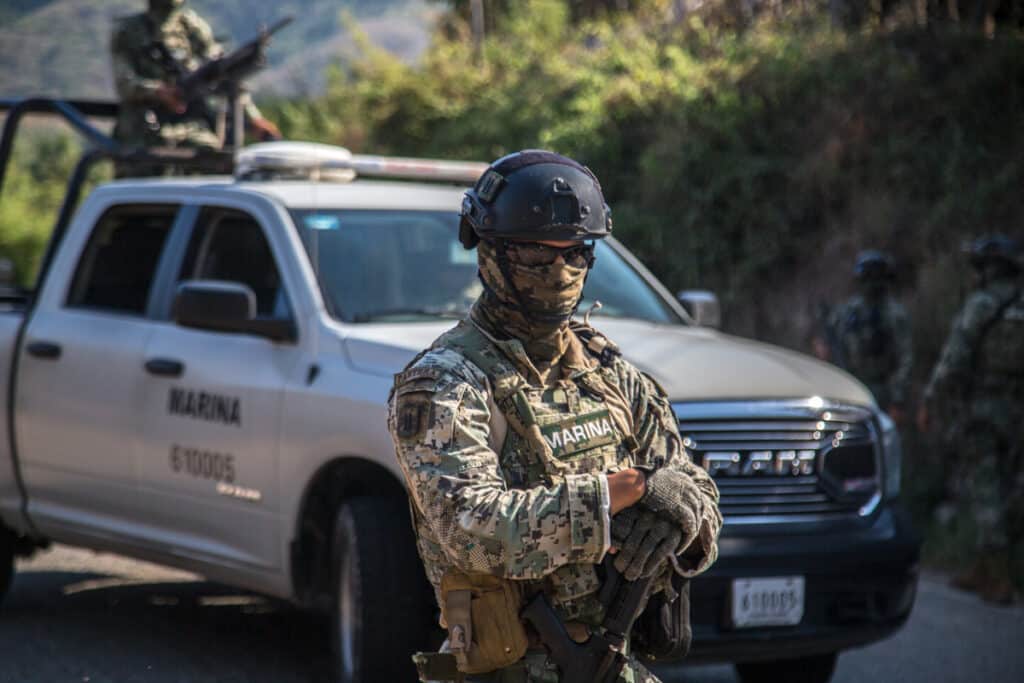
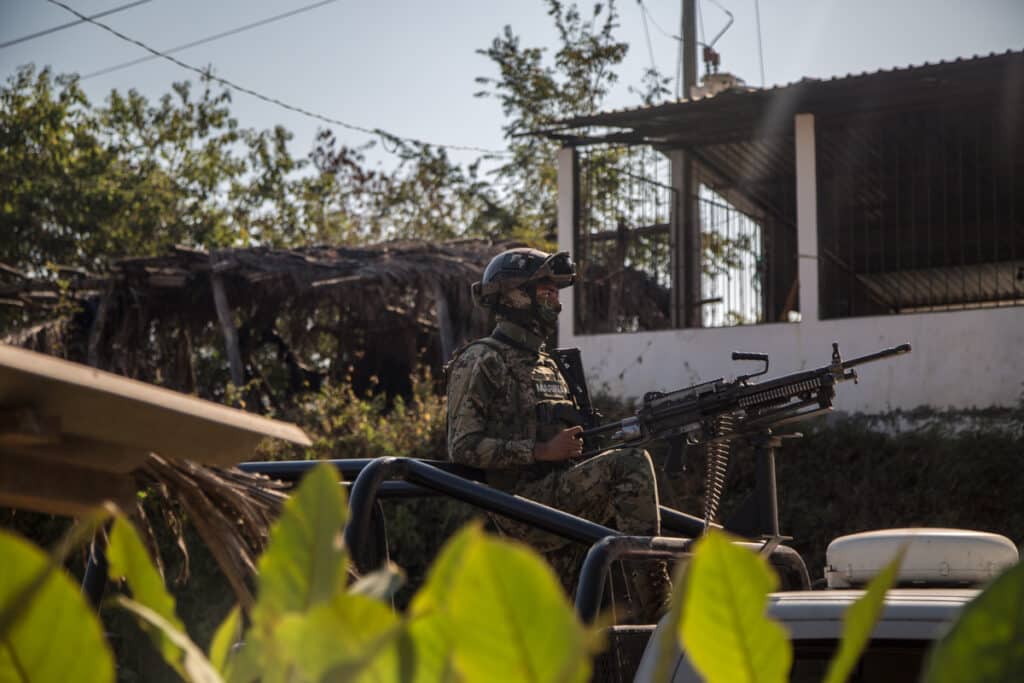
Tras haberse acreditado únicamente un representante de la CNB y de SEGOB, este último comentó que el motivo del operativo era la búsqueda del abogado Lagunes y el maestro Díaz, según señaló Cristian de la Rosa, quien además afirmó que la búsqueda estaba haciéndose «a partir de los puntos que las familias les dieron».
-¿Fueron las familias las que les dieron los puntos para buscar? ¿Dentro de nuestra comunidad? Preguntó un comunero, miembro de la Comisión de Seguridad de Ostula.
-Si, así fue, afirmó, también, Erick Herrera Nieves, representante de la CNB.
-No lo creo, nosotros estamos en contacto con las familias y no han dicho esto, además si los compañeros estuvieran en nuestro territorio ya los hubiéramos entregado a sus familiares. En Ostula no hay desaparecidos.
-…
Más adelante en este diálogo, ambos funcionarios reconocieron que no fueron las familias sino los mandos de las Fiscalías, tanto de Michoacán, como de Colima. En el video que presentamos junto a este reportaje mostramos un poco de la desafortunada conversación que sostuvieron los funcionarios públicos y las autoridades de Ostula, quienes sin más filtros fueron categóricos en su señalamiento de la colusión que ha existido históricamente entre las instituciones de seguridad del Estado y las organizaciones criminales, precisando que las últimas han sido los Caballeros Templarios y actualmente, el CJNG.
«Dicen que el pueblo que no sabe su historia –señala puntualmente Pedro– está condenado a repetirla, de cierta manera, en nuestros hogares, esta es la plática, una vez a la semana al menos, de toda la situación, nuestros padres nos cuentan, nuestros abuelos nos cuentan, de cómo ellos vivieron. En estos días lo estamos viviendo, ¿cómo no ser conscientes de tantas cosas? Hay que contar todo lo que se ha vivido, el proceso de lucha que ha vivido la comunidad, que ha costado muertes, desaparecidos, que la seguridad aquí corre por cuenta del pueblo, de la propia comunidad. En Ostula la lucha por la seguridad es permanente».
Al cierre de este trabajo no hay rastros aún del paradero del abogado Ricardo Lagunes y el profesor Antonio Díaz. Sus familias continúan las búsquedas mientras que son las instituciones, en este caso las Fiscalías de Michoacán y Colima y la CNB, quienes no sólo no han dado resultado alguno, además están realizando supuestas búsquedas en lugares que no corresponden con la información real que les ha sido proporcionada.
Más allá de un esfuerzo comprometido y honesto, es el Estado mexicano el que opta por el performance de la búsqueda, en lugar de buscar realmente a las personas desaparecidas. En este caso, la falta de resultados ha dejado no sólo a dos familias golpeadas y en profundo dolor sino a una comunidad –la de Aquila–, en una división permanente y al grupo mayoritario de comuneros a merced de sus contrarios, aliados de una empresa minera que hace todo lo posible, día a día, para aumentar sus ganancias y disminuir sus pérdidas económicas.
Te puede interesar: La extracción de la vida en tierras michoacanas




